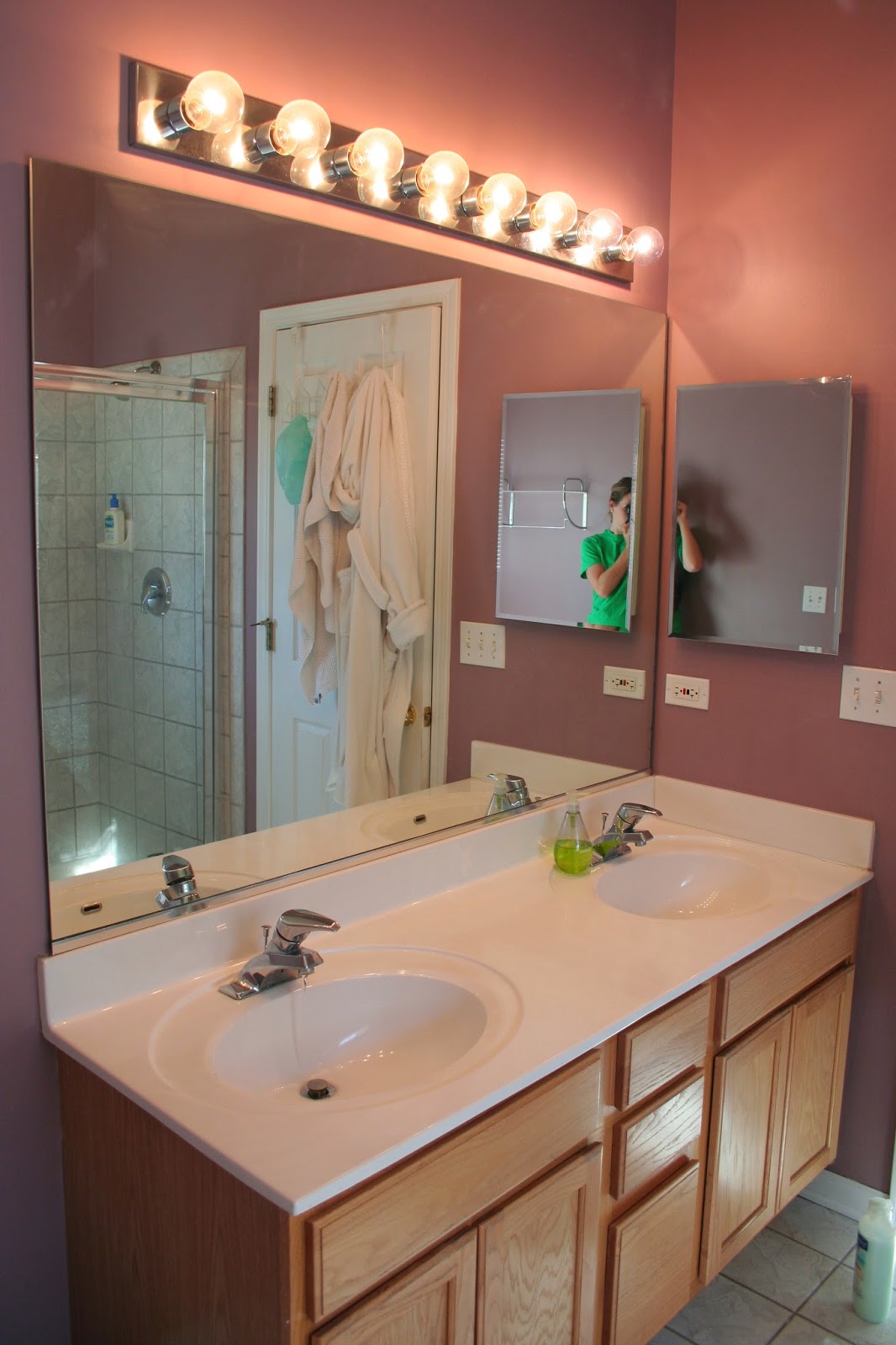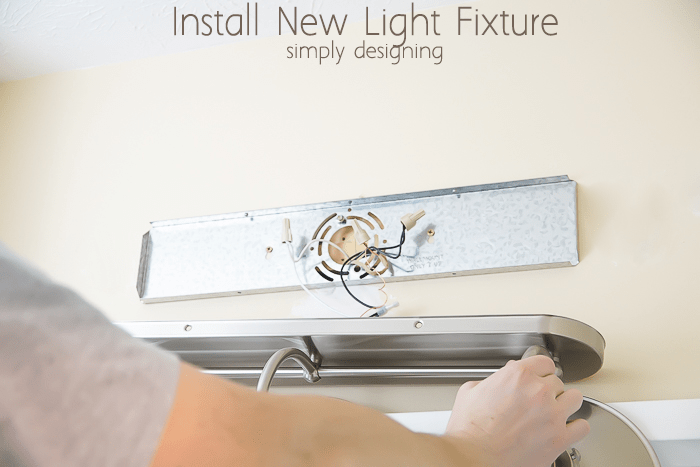Choosing the Right Bathroom Lighting Fixture
Bathroom lighting serves both practical and aesthetic purposes, making it essential to choose the right fixtures. When selecting lighting for your bathroom, consider factors such as the size and layout of the space, the desired ambiance, and the overall style of your decor.
- Assess Your Bathroom Space: Before selecting a lighting fixture, evaluate the size and layout of your bathroom. Larger bathrooms may require multiple light sources to adequately illuminate the space, while smaller bathrooms may benefit from compact, space-saving fixtures.
- Consider Functionality: Determine the primary functions of your bathroom lighting. Task lighting, such as vanity lights, is crucial for activities like shaving or applying makeup. Ambient lighting provides overall illumination, while accent lighting can highlight architectural features or decor elements.
- Choose the Right Style: Select a lighting fixture that complements the style of your bathroom decor. Whether your bathroom has a modern, traditional, or eclectic design, there are various fixture designs and finishes available to suit your aesthetic preferences.
- Opt for Water-Resistant Fixtures: Since bathrooms are exposed to moisture and humidity, it’s essential to choose fixtures that are specifically designed for wet environments. Look for lighting fixtures with an IP (Ingress Protection) rating suitable for use in bathrooms to ensure durability and safety.
- Evaluate Energy Efficiency: Consider energy-efficient lighting options, such as LED fixtures, to reduce energy consumption and lower utility bills. LED lights are long-lasting, eco-friendly, and produce less heat than traditional incandescent bulbs, making them ideal for bathroom use.
- Seek Professional Advice: If you’re unsure about which lighting fixture is best for your bathroom, consult with a lighting specialist or interior designer. They can offer expert advice on selecting fixtures that meet your functional needs and aesthetic preferences while adhering to safety standards.

Understanding Electrical Wiring and Safety Precautions
Before embarking on a bathroom lighting installation project, it’s crucial to have a solid understanding of electrical wiring and safety precautions to ensure a safe and successful outcome. Working with electricity can be hazardous, so taking the necessary precautions is paramount to prevent accidents and injuries.
Educate Yourself: Familiarize yourself with the basics of electrical wiring, including understanding electrical circuits, wire gauges, and voltage requirements. Online resources, books, and tutorials can provide valuable information to help you grasp these concepts.
Follow Building Codes and Regulations: Before starting any electrical work, research and adhere to local building codes and regulations governing electrical installations in bathrooms. These codes are in place to ensure safety and compliance with industry standards.
Turn Off Power: Before working on any electrical components, always turn off the power supply to the area where you’ll be installing the lighting fixture. Use a circuit tester to verify that the power is off before proceeding with the installation to prevent electrical shocks.
Use Proper Tools and Equipment: Ensure you have the necessary tools and equipment for the job, including wire strippers, pliers, screwdrivers, and voltage testers. Using the right tools can make the installation process more efficient and safer.
Avoid Overloading Circuits: Be mindful of the electrical load on existing circuits when adding new lighting fixtures. Overloading circuits can lead to tripped breakers, electrical fires, or damage to appliances. If needed, consider installing additional circuits to accommodate the new fixtures.
Install Ground Fault Circuit Interrupters (GFCIs): In areas where water is present, such as bathrooms, install GFCIs to protect against electrical shocks. GFCIs detect electrical imbalances and quickly cut off power to prevent accidents.
Step-by-Step Guide to Installing a Bathroom Light
Installing a new bathroom light fixture can enhance both the functionality and aesthetics of your space. With the right tools, materials, and know-how, you can tackle this project yourself and achieve professional-looking results. Here’s a step-by-step guide to installing a bathroom light:
Gather Materials and Tools: Before you begin, gather all the necessary materials and tools for the installation, including the new light fixture, wire nuts, electrical tape, screwdrivers, wire strippers, and a voltage tester.
Turn Off Power: Shut off the power supply to the bathroom at the circuit breaker to prevent the risk of electrical shocks. Use a voltage tester to ensure that the power is off before proceeding with the installation.
Remove Old Fixture: Unscrew and remove the existing light fixture from the wall or ceiling. Carefully disconnect the wires, taking note of how they are connected for reference during the installation of the new fixture.
Install Mounting Bracket: If the new fixture requires a mounting bracket, attach it to the electrical box in the wall or ceiling according to the manufacturer’s instructions. Make sure the bracket is securely fastened.
Connect Wires: Connect the wires from the new light fixture to the corresponding wires in the electrical box. Use wire nuts to secure the connections and electrical tape to insulate them. Double-check that the connections are tight and secure.
Attach Fixture: Once the wires are connected, carefully position the new light fixture over the mounting bracket. Secure the fixture in place using the provided screws, making sure it is level and flush against the wall or ceiling.
Test the Fixture: Turn the power back on at the circuit breaker and test the light fixture to ensure it is working correctly. If the light turns on without any issues, you have successfully installed the new bathroom light.
Final Adjustments: Make any necessary adjustments to the positioning or alignment of the light fixture. Tighten screws as needed to ensure stability and proper fit.
Adding Dimmers and Smart Lighting for Functionality and Style
Dimmers and smart lighting offer innovative solutions for enhancing the functionality and style of your bathroom lighting. By incorporating these features into your bathroom design, you can create a versatile and personalized lighting scheme that meets your needs and preferences.
Dimmer Switches: Installing dimmer switches allows you to adjust the brightness of your bathroom lighting to suit different activities and moods. Dimmers provide flexibility and control, allowing you to create a soft, ambient glow for relaxing baths or a bright, focused light for grooming tasks.
Energy Efficiency: Dimming your lights can also help save energy and reduce electricity costs. By lowering the brightness level, you consume less power while still achieving adequate illumination. Choose energy-efficient LED bulbs for even greater energy savings.
Smart Lighting Systems: Smart lighting systems enable you to control your bathroom lights remotely using a smartphone, tablet, or voice commands. With features like customizable settings, scheduling options, and color-changing capabilities, smart lighting allows for personalized and dynamic lighting experiences.
Enhanced Convenience: Smart lighting technology offers added convenience and automation to your bathroom routine. Set timers to turn lights on and off automatically, or integrate motion sensors for hands-free operation. You can even create pre-programmed lighting scenes for different times of day or activities.
Aesthetic Appeal: Beyond their practical benefits, dimmers, and smart lighting can enhance the aesthetic appeal of your bathroom. Create ambiance and atmosphere with adjustable lighting levels and customizable color options. Showcase architectural features or decorative elements with precision lighting control.
Installation Considerations: When adding dimmers or smart lighting to your bathroom, consider compatibility with existing fixtures and wiring. Some dimmer switches may require specific types of bulbs or wiring configurations, so be sure to consult with a lighting professional or electrician if needed.
Troubleshooting Common Bathroom Light Installation Issues
While installing a new bathroom light fixture can be a rewarding DIY project, it’s not without its challenges. From electrical issues to mounting difficulties, various problems can arise during the installation process. Here are some common bathroom light installation issues and how to troubleshoot them:
Faulty Wiring Connections: If your new light fixture isn’t working properly, the issue may be due to faulty wiring connections. Double-check that all wires are securely connected and properly insulated with wire nuts and electrical tape. Use a voltage tester to ensure there is power flowing to the fixture.
Incompatible Fixture Size: Sometimes, the size or shape of the new light fixture may not align with the existing electrical box or mounting location. In this case, you may need to install a new mounting bracket or adjust the placement of the fixture to ensure a proper fit.
Insufficient Power Supply: If the new light fixture is not receiving enough power, it may not function correctly. Check the wattage rating of the fixture and compare it to the capacity of the circuit. If necessary, upgrade the circuit or install a dedicated circuit for the fixture to ensure adequate power supply.
Mounting Challenges: Mounting the new light fixture securely to the wall or ceiling can sometimes be tricky, especially if the mounting hardware is incompatible or difficult to access. Use anchors or additional support if needed to ensure the fixture is stable and properly aligned.
Dimmer Compatibility Issues: If you’re installing a dimmer switch with your new light fixture, make sure it is compatible with both the fixture and the type of bulbs you’re using. Some dimmers may not work effectively with certain bulb types or wattages, leading to flickering or inconsistent dimming.
Consult a Professional: If you encounter persistent issues or feel unsure about troubleshooting electrical problems on your own, it’s best to seek assistance from a qualified electrician. They can identify and resolve any underlying issues safely and efficiently, ensuring the proper functioning of your bathroom lighting system.
Bathroom Lighting How to Replace a Vanity Light The Home Depot
How to Install a Bathroom Light Fixture Wayfair
Install a New Bathroom Light Fixture Simply Designing with Ashley
Bathroom Upgrade Part 1: Splitting the Vanity Light Pneumatic Addict
✅Best Bathroom Vanity Lights How to Install Bathroom Light Fixture Before u0026 After Install
How to Mount a Light On Top of a Mirror Bathroom Vanity
How to Install Vanity Lights
DIY Bathroom Light Upgrade Light fixtures bathroom vanity, Diy
Related Posts:











